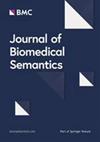Elucidating the semantics-topology trade-off for knowledge inference-based pharmacological discovery
IF 2
3区 工程技术
Q3 MATHEMATICAL & COMPUTATIONAL BIOLOGY
引用次数: 0
Abstract
Leveraging AI for synthesizing the deluge of biomedical knowledge has great potential for pharmacological discovery with applications including developing new therapeutics for untreated diseases and repurposing drugs as emergent pandemic treatments. Creating knowledge graph representations of interacting drugs, diseases, genes, and proteins enables discovery via embedding-based ML approaches and link prediction. Previously, it has been shown that these predictive methods are susceptible to biases from network structure, namely that they are driven not by discovering nuanced biological understanding of mechanisms, but based on high-degree hub nodes. In this work, we study the confounding effect of network topology on biological relation semantics by creating an experimental pipeline of knowledge graph semantic and topological perturbations. We show that the drop in drug repurposing performance from ablating meaningful semantics increases by 21% and 38% when mitigating topological bias in two networks. We demonstrate that new methods for representing knowledge and inferring new knowledge must be developed for making use of biomedical semantics for pharmacological innovation, and we suggest fruitful avenues for their development.阐明基于知识推理的药理学发现的语义-拓扑权衡
利用人工智能合成大量的生物医学知识,在药理学发现方面具有巨大的潜力,其应用包括为未治疗的疾病开发新的治疗方法,以及将药物重新用作紧急流行病的治疗方法。创建相互作用的药物、疾病、基因和蛋白质的知识图谱表示法,可以通过基于嵌入的 ML 方法和链接预测进行发现。以前的研究表明,这些预测方法很容易受到网络结构偏差的影响,即这些方法的驱动力不是发现对机制的细微生物学理解,而是基于高阶枢纽节点。在这项工作中,我们通过创建知识图谱语义和拓扑扰动的实验管道,研究了网络拓扑结构对生物关系语义的干扰效应。我们发现,在减轻两个网络中的拓扑偏差时,消除有意义的语义导致的药物再利用性能下降分别增加了 21% 和 38%。我们证明,要利用生物医学语义进行药物创新,就必须开发新的知识表示和新知识推断方法,并提出了富有成效的开发途径。
本文章由计算机程序翻译,如有差异,请以英文原文为准。
求助全文
约1分钟内获得全文
求助全文
来源期刊

Journal of Biomedical Semantics
MATHEMATICAL & COMPUTATIONAL BIOLOGY-
CiteScore
4.20
自引率
5.30%
发文量
28
审稿时长
30 weeks
期刊介绍:
Journal of Biomedical Semantics addresses issues of semantic enrichment and semantic processing in the biomedical domain. The scope of the journal covers two main areas:
Infrastructure for biomedical semantics: focusing on semantic resources and repositories, meta-data management and resource description, knowledge representation and semantic frameworks, the Biomedical Semantic Web, and semantic interoperability.
Semantic mining, annotation, and analysis: focusing on approaches and applications of semantic resources; and tools for investigation, reasoning, prediction, and discoveries in biomedicine.
 求助内容:
求助内容: 应助结果提醒方式:
应助结果提醒方式:


